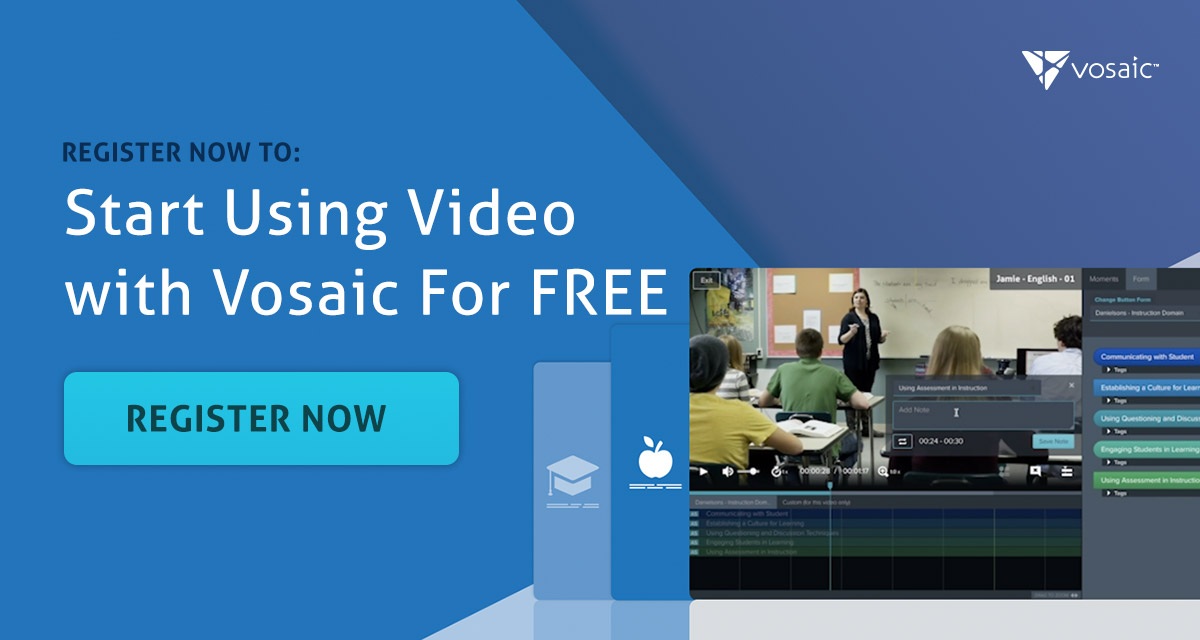Stay on Top of Important Discoveries
We read case studies and academic journals so you don’t have to. Sign up and we’ll send you the key takeaways.
The design of The Framework for Teaching Clusters (FFT Clusters) complements the Danielson Framework for Teaching. In their words, The Framework for Teaching is “a common language for instructional practice that is grounded in a philosophical approach to and understanding of great teaching and the nature of learning.” FFT clusters were designed to condense the information from FFT, which includes four domains and 22 components. Narrowed down to six clusters, FFT can be used for and applied to any teaching situation, no matter the age or subject.
The six clusters provide a roadmap for student learning, each cluster including three focus areas to support professional growth and deepen understanding. This information gives tools to achieve high levels of success with student learning. Out of the six clusters, five can be easily incorporated within Vosaic’s platform to perform cluster observation.
If you don't have a Vosaic account for teacher coaching and observation, you can start with a free trial today.

Cluster 1: Clarity & Accuracy
Cluster 1, titled “Clarity & Accuracy,” is all about creating a clear goal for students to follow. Every single class and lecture has a purpose, and there is a reason for going over the material that teachers cover in their classes. An instructional purpose is simply a statement that communicates to the students what they should take away from the instruction time. FFT states that instructional purposes should “be clear and appropriately challenging for the students in the class. It is not sufficient for a teacher to state what the students will do during a lesson; [the teacher] should also be clear about what they will learn.”
As many teachers know, using activities in class is a great way to achieve higher levels of engagement. A successful classroom or learning exercise, according to FFT, must serve the lesson’s intentions, and be linked back to the instructional purpose. Not only does the information need to be clear to the learner, but it also needs to be accurate. Teachers can demonstrate their proficiency in the subject through reflection by identifying successful and unsuccessful portions of their lectures.
Cluster 2: Learning Environment
Creating the right learning environment for students can make or break the ability to maximize time spent in the classroom, and the overall learning experience. If students don’t understand that their ideas carry value, they will be much less likely to share and actively participate.
Teachers can foster an atmosphere of respect among students by “listening carefully to students’ ideas, asking for clarification and elaboration, [and] displaying sensitivity to students’ feelings.” It’s crucial to create an environment where students feel comfortable sharing their ideas and don’t experience ridicule from their classmates.
It’s equally vital for students to have rigorous, engaging, and relevant work. This concept goes for students of all ages; just because a class is younger, doesn’t mean they can’t complete meaningful projects and activities. One way for students to get the most out of a lesson is to use group work. Group work is an excellent tool because it teaches problem-solving skills, such as getting past disagreements and having in-depth discussions.
While creating an engaging learning environment, instructors also need to get to know their students on a deeper level. This practice helps create a distinction between a student who has “blown off” an assignment, and one who genuinely doesn’t understand a concept well enough. Deeper relationships allow for more personalized approaches to students and their learning styles.
Cluster 3: Classroom Management
Teaching is more than lecturing over topics; classroom management is also essential to student success. Productive classroom management requires efficient execution of tasks like “taking attendance, guiding transitions into work groups, distributing and collecting materials, and handling end-of-class dismissal.”
Proper classroom management avoids time-wasting so that teachers can spend more effort on teaching and learning. Not only should educators acknowledge that their own time is important, but they should stress that their students’ time is important, too. By doing so, when teachers spend a lot of time going over something, their students will realize that it’s more than likely significant.
Many new teachers become concerned when students refuse to comply with their decisions, and worry whether or not the students are learning. According to cluster 3, “students need to feel in control of their lives; they are quickly alienated by a teacher whose approach to classroom management is one of ‘This is how it is because I say so.’” Teachers must develop classroom management practices that maintain order, but still give students a feeling of autonomy in learning.
It’s also vital that teachers establish (and practice) routines and procedures. These are norms that will make the class run much more efficiently. By making the most of their physical space, practicing organization, and giving students responsibility in the learning process, teachers can master classroom management.
Cluster 4: Intellectual Engagement
Intellectual engagement is different than traditional engagement. Intellectual engagement is more than being busy or on task; students could do worksheets or exercises and not learn anything. To be intellectually engaged, “[i]t’s essential to maximize the extent students are involved in intellectual activity, such as exploring new ideas, making connections, or formulating and testing hypotheses.”
Any visitor who comes into an intellectually engaged environment will be able to tell right away. An intellectually engaged classroom will be high energy, and students will have a firm grasp of what is going on. When teaching for intellectual engagement, it’s essential to design and manage lessons and tasks with engagement as one of the primary goals.
Cluster 5: Successful Learning
A lot goes into creating a successful classroom, all pointing to one goal: learning. Enabling successful learning isn’t just lecturing at a class; it’s making sure that students have learned the information at hand. In the past, the only way to measure actual learning was via tests, quizzes, and other summative assessments.
However, more modern schools of thought suggest that there are effective alternatives. Unlike taking an exam then moving on to the next unit, newer options are much more subtle. Teachers can involve comprehension in activities that students are already working on, and conduct observations to test knowledge.
They can also loop students’ families into the conversation, as family members “can provide insight into the students’ lives and interests beyond school. Such information can be invaluable to a teacher in planning instruction and responding to individuals.”
Why use both Danielson’s FFT clusters and Vosaic?
Vosaic is a video tool built explicitly for providing feedback and reflection, allowing education professionals to rewatch and directly annotate classroom videos. Users can create "Forms" that are based on Danielson's rubrics or clusters.

In the context of Danielson’s/FFT, each cluster has an associated rubric to measure the success of classroom implementation. Users can create cluster rubrics in Vosaic and attach them to specific videos. By combining Vosaic’s video platform with one of the leading teaching frameworks, teachers and administrators can ensure that the feedback provided is highly personalized and objective. It’s this personalization and objectivity of feedback that helps educators reach new levels of proficiency in teaching.




